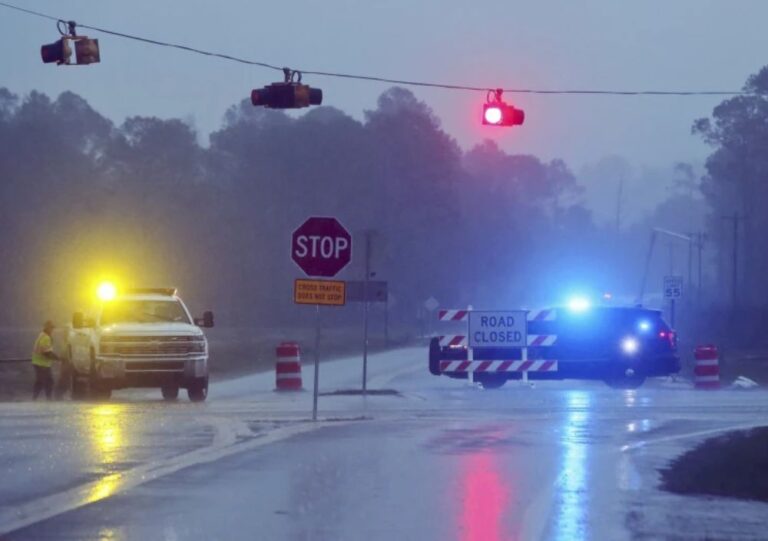The southeast US storm 2025 season has been particularly intense, with unpredictable weather patterns causing widespread concern. Meteorologists have recorded significant changes in storm behavior, attributing it to climate shifts and changing ocean temperatures. As we delve deeper into the impact and response strategies, understanding these evolving patterns becomes crucial.
The Southeastern region, with its unique climate dynamics, is particularly susceptible to sudden shifts. Key threats include:
- Hurricanes and tropical storms
- Thunderstorms with strong winds
- Increased hailstorm activity
- Rising risks of flash floods
This year, the southeast US storm 2025 series has been marked by severe weather fronts, bringing a mix of thunderstorms, hail, and heavy winds.
Flash Flood Risks in North Carolina
One of the regions heavily impacted by severe weather is North Carolina. The flash flood risk North Carolina faces has dramatically increased this year, with storms bringing in torrential rain that surpasses historical averages. Urban areas are especially vulnerable due to outdated drainage systems that struggle to handle the sudden influx of water. Emergency services have ramped up efforts, but the frequency of these events calls for more robust infrastructure improvements.
Major Concerns Include:
- Inadequate drainage systems in urban areas
- Overflowing rivers and creeks
- Increased stormwater runoff
- Delayed emergency response in high-risk zones
Cities like Raleigh and Charlotte have witnessed flash floods that overwhelmed local capacities, prompting state-wide discussions on climate adaptation.
The Impact of Helene Storm Damage
The Helene storm damage has been a talking point across weather news channels. With winds reaching devastating speeds, Helene left a trail of destruction across multiple states. Key impacts included:
- Roofs torn off from buildings
- Uprooted trees blocking major roads
- Power lines damaged, causing widespread blackouts
- Severe flooding in low-lying areas
Helene’s path of devastation highlighted weaknesses in storm preparedness, particularly in coastal regions. From evacuation delays to power grid failures, the storm exposed vulnerabilities that need addressing to prevent repeat scenarios in future hurricane seasons.
Hailstorm Outbreaks Across the US in 2025
Hailstorms have also been a significant concern this year. The hailstorm US 2025 event saw golf ball-sized hail pummeling vehicles and properties, particularly in the Southeastern region. These storms are not only dangerous but also incredibly costly, with damage estimates running into the millions.
Common Damages Include:
- Vehicle dents and windshield cracks
- Roof and siding damage on homes
- Crop destruction in agricultural zones
- Infrastructure strain due to cleanup efforts
Staying Updated with US Severe Weather Updates
Staying informed is crucial during such unpredictable weather seasons. Access to US severe weather updates has proven invaluable for residents, allowing for quick evacuations and preparedness.
How to Stay Updated:
- Use weather apps for real-time alerts
- Follow local news channels for emergency broadcasts
- Sign up for government alert systems
- Monitor community announcements for evacuation plans
Mitigation Strategies and Community Preparedness
Communities in the Southeastern US have started to prioritize weather preparedness. Efforts to enhance resilience include:
- Building flood-resistant infrastructure
- Reinforcing electrical grids
- Increasing community-based emergency drills
- Expanding public awareness programs
State governments are also collaborating with federal agencies to ensure resources are allocated effectively during disasters. Local initiatives encourage residents to maintain emergency kits and participate in community drills to enhance readiness.
Conclusion
The southeast US storm 2025, combined with the flash flood risk North Carolina faces, the aftermath of Helene storm damage, and the widespread hailstorm US 2025 events, has made weather preparedness a top priority. Staying updated with US severe weather updates is not just recommended; it’s necessary for survival. As these weather patterns continue to evolve, so too must our strategies for coping with their impact. Proactive measures, community cooperation, and real-time information sharing are key to weathering these powerful storms.
Looking ahead, the Southeastern US must continue to prioritize climate resilience, infrastructure improvements, and better emergency response systems to combat the increasing severity of weather events.
FAQs
What is the primary cause of the southeast US storm 2025 season’s intensity?
The southeast US storm 2025 season is more intense primarily due to changing ocean temperatures and climate shifts, which fuel stronger storms and unpredictable weather patterns.
What damage did Helene cause in 2025?
The Helene storm damage included torn-off roofs, uprooted trees, and widespread power outages, especially in coastal areas that were most vulnerable to high-speed winds.
How can residents stay updated during severe weather events?
Following US severe weather updates through weather apps, news channels, and government alerts can help residents stay prepared and informed.


